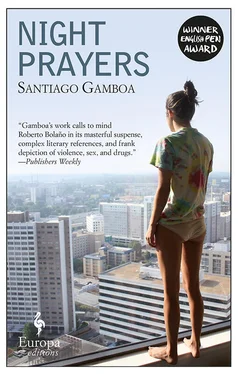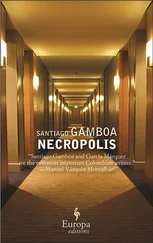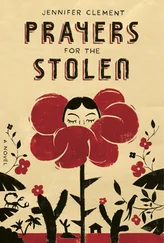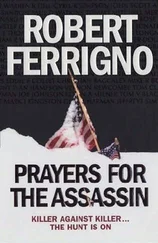The favorite son of gin is the dry martini, which takes us to the other side of the Atlantic.
Humphrey Bogart’s last words were: “I should never have switched from Scotch to martinis.” They were his doom, as they were for many elegant drunks with their tuxedos and their cigarette cases. A martini in the hand was a symbol of success in the country where success matters. We are in the United States, friends.
Someone once said that the martini was the only American invention as perfect as the sonnet. Is that possible? At the Tehran conference of 1943, President Roosevelt gave it to Stalin to try. Stalin looked at the glass, drank it cautiously, looked at his advisers, then licked his mustache and asked for more. Later, Nikita Khrushchev would say that the martini was the true “lethal weapon” of the United States.
“When I get to heaven I am going to ask St. Peter to take me to the man who invented the dry martini,” wrote William Buckley. “Just so I can say thanks.”
Who was that man? Not an easy question to answer.
There are three hypotheses. The “San Francisco theory” attributes it to the bartender Jerry Thomas, born in New Haven, Connecticut, in 1825, who worked in the bar of the Hotel Occidental in San Francisco. In 1862 he published his Bartenders’ Guide , in which he includes inventions such as the Tom & Jerry and the Blue Blazer. Et voilà! In a later edition, in 1887 there appears a new cocktail called the Martinez. Martinez was a town in California and, according to the legend, Thomas made it for a man who was on his way to Martinez. “Very well, friend, this is a new drink I’ve just invented for your journey,” he said. Martinez became Martine, and then Martini.
But the citizens of Martinez have their own theory (the “Martinez theory”). It’s this: in about 1870 there was a bar owned by a Frenchman named Jules Richelieu, who had moved there from New Orleans. On one occasion a miner came in and asked for a whiskey. Richelieu filled his hip flask, but the man, on trying it, spat it out and cursed. Ashamed, the Frenchman is supposed to have said: “Wait, I’d like you to try something different.” He made a mixture and served it in a glass with an olive. The miner tried it, smiled, drank it all down in one go, and asked Richelieu: “What is it?” Richelieu replied: “It’s a Martinez cocktail.”
The final hypothesis (the “New York theory”) is that of a mysterious bartender named Martini di Arma di Taggia, an Italian immigrant, who worked in the bar of the now-defunct Knickerbocker Hotel in New York (on 42nd and Broadway). According to this version it was invented in 1912, and became popular because it was the favorite drink of John D. Rockefeller, a hypothesis supported by one of the best known experts on cocktails, the Englishman John Doxat, author of The World of Drinks and Drinking (1971).
For sad Jack London, the martini was a symbol of social ascent: going from whiskey to martini was like jumping from the frozen wastes of the Yukon to the drawing rooms of the Upper West Side.
Oh, no! What do we do now?
We close the bars!
On January 16, 1920, thirty-six states ratified the Eighteenth Amendment to the Constitution, prohibiting the sale of alcohol.
Buñuel, who was in Los Angeles around that period, wrote in his memoirs: “I have never drunk as much as I did during the period of Prohibition.”
It lasted until 1934, when Franklin D. Roosevelt signed the decree repealing it in the Oval Office of the White House, in front of the press. To drive home the point, he mixed the first legal martini for the cameras and the flashbulbs.
The dry martini entered literature and the cinema. Hollywood grabbed hold of it and the actors drank it like crazy. David Niven always had a glass in his hand. Marlene Dietrich only chose lovers who drank martinis (as she admitted once to Hemingway), and its short glass, like an upside-down umbrella, was reproduced in paintings, photographs, and advertisements. The one by Mel Ramos is famous: a naked woman sitting in a glass of martini.
The best verse was written by Dorothy Parker (hers is the brilliant phrase: “brevity is the soul of lingerie”). Her poem says:
I like to have a martini,
Two at the very most.
After three I’m under the table,
After four I’m under the host.
I graduated high school at the end of that year and enrolled to study philosophy at the National University. Mother took her head in her hands and started crying. Father said angrily, oh, my God, first the girl becomes a guerrilla and now this fool wants to become an intellectual, it’s like a disease! what did we do to have children like this, Lord? why are you trying our patience?
Whenever we were out on the street and Father saw beggars under a bridge, he would say, look, Manuel, a philosophers’ convention, is that what you want from life? you’re going to die of hunger! To stop him bugging me, I showed him an Internet page that said the philosopher Fernando Savater had been paid twenty-five thousand euros for a lecture. Father looked at it suspiciously and said, it isn’t possible, it must be a mistake or a fake, Manuel, you faked it, you can fake anything with the Internet… Who is this Savater?
The university! At last I was leaving that absurd high school behind. Getting out and spending my time with people similar to me was a blessed respite. Although not without its drawbacks. One mistake we make when we’re young is to believe that people who are interested in the same things as we are must necessarily be similar to us. Nature does its work, the spirit blows where it will. There are envious and wicked people even in worlds that we would think are dominated by clarity and beauty, but be that as it may, at the university I began a period of calm, intense reading, and for the first time felt that I was finding some kind of harmony.
The first semester passed, then the second.
Apart from my own classes, I loved to wander around the fine arts department, sometimes sneaking into one of the studios to see what they were doing. There too, surrounded by the smell of turpentine, in those spaces dominated by the sensual qualities of color and volume, I felt a great sense of peace, although I never regretted my choice. I was getting to know the world. Sometimes, when I left my classes late or stuck around for a talk in the lecture theater, I’d paint secretly on the walls of the faculty: letters, islands, storms, skies.
It was a period of long silences, Consul. My life had settled into a pleasant routine, and repeating it daily, without any upsets, was a genuine relief. Attending my classes, reading in the library, going to seminars and lectures, reading on the bus, reading on the lawns of the university, reading at home, going to the movies, scribbling in exercise books, taking notes. Life at home was the same as ever, but now I could also be a long way away. As I got used to the outside world, Mother and Father came to seem as if they belonged to another era, like an old sepia photograph.
Another semester passed, and another.
Sometimes Juana would come and find me after my classes and we’d have a glass of red wine in the cafeteria or go up to Chapinero for a bite to eat. I can still see her on the sidewalk, her hands deep in her pockets, shivering with cold in the wind coming down from the hills or avoiding the fumes from the buses. We’d eat whatever, Chinese food, fried chicken, pizza, and talk about my courses, the things we were both reading, movies, and sometimes also about politics, but while I talked or listened to her talking I felt something strange, a kind of premature nostalgia, as if in those chats of ours I already had a premonition of what was soon going to happen: her disappearance, the way that suddenly, without anything unusual happening, she stopped being among us, without a word, which was worse than if she’d died, Consul, because when someone dies you’re there, you witness their deterioration and are aware of the advance of death, its progress, and there even comes a time when you want it to come and set everyone free.
Читать дальше












